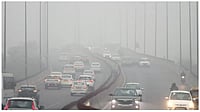Homes were washed away, a dozen bridges were destroyed and over 25 people have been killed after a Glacial Lake Outburst Flood occurred in parts of Lhonak Lake in Sikkim, leading to a rapid rise in water levels with very high velocities downstream along the Teesta River Basin in the early hours of October 4.
A study done by the Central Water Commission in 2015 clearly warned the state government that most of the hydropower projects on the Teesta river are highly vulnerable to such events. CWC researchers noted that GLOFs in glacial lakes in the river basin could lead to severe flash floods downstream, impacting areas like Lachen, Chungthang, Dikchu, Singtam, Manipal, Rangpo, Bara Mungwa villages, and the entirety of hydropower projects Teesta I to VI along a 175-km stretch of the river.
What is a Glacial Lake Outburst Flood?
A Glacial Lake Outburst Flood, or GLOF, is a sudden release of water from a lake fed by glacier melt that has formed at the side, in front, within, beneath, or on the surface of a glacier.
GLOFs occur when lakes formed by melting glaciers suddenly burst open. This can happen due to various reasons, such as excessive water accumulation in the lake or triggers like earthquakes.
When the lake bursts, it releases an enormous volume of water all at once, causing flash floods downstream. These floods can be extremely destructive and perilous for both people and the environment in the affected area.
What triggers a GLOF?
Apart from climate change, several other factors can trigger a GLOF including earthquakes, avalanches, or landslides, that can shake loose the ice or debris, weakening the ice dam and causing it to give way. Sometimes the dam gets gradually degraded in quality over time, or could be ruptured by by a natural disaster like an earthquake.
The breaches are highly unpredictable, "because they can be caused by so many different factors," Lauren Vargo, a glacier expert and scientist at the Antarctic Research Centre in New Zealand told AFP.
There are speculations that the outburst could have been triggered by the 6.2 magnitude earthquake in Nepal a day before, which also sent strong tremors across north India. But nothing has been confirmed yet.
Satellite images from the Hyderabad-based National Remote Sensing Centre showed that the area of south Lhonak Lake drastically reduced from 167.4 hectares on September 28 to 60.3 hectares on October 4, confirming a GLOF event that caused massive damage in the Teesta River basin.

Are some areas more susceptible to GLOFs?
GLOFs have been a great concern for the Himalayas due to the area’s high population density, lack of sufficient disaster infrastructure, susceptibility to economic and environmental implications and rampant constructions. Such floods originate at high altitudes and can flow down with enormous energy and change the terrain’s existing morphology, according to a report in Nature.
South Lhonak Lake is a glacial-moraine-dammed lake situated in Sikkim's far northwestern region. It is one of the fastest-expanding lakes in the Sikkim Himalaya region and is classified as one of the 14 potentially dangerous lakes susceptible to GLOFs, according to the South Asia Network of Dams, Rivers, and People.
The lake is situated at an altitude of 5,200 m (17,100 ft) above sea level and formed due to the melting of the Lhonak glacier. The lake's size is rapidly increasing due to the melting of the lake's associated South Lhonak glacier and additional meltwater from the adjacent North Lhonak and main Lhonak glaciers.
According to a 2020 report by Mongabay, htere are currently more than 300 glacial lakes in Sikkim Himalayan, out of which 10 have been identified as vulnerable to outburst floods.
A CWC official told PTI on condition of anonymity: "Multiple studies, including one by the commission, had cautioned the state authorities about the GLOF hazard in the upper Teesta River region. We currently have one flood forecasting station 20 km upstream of Chungthang. More stations can be installed if the state submits a proposal." Several occasions in the last two decades have seen government agencies and research studies warning about potential GLOFs in Sikkim.


























